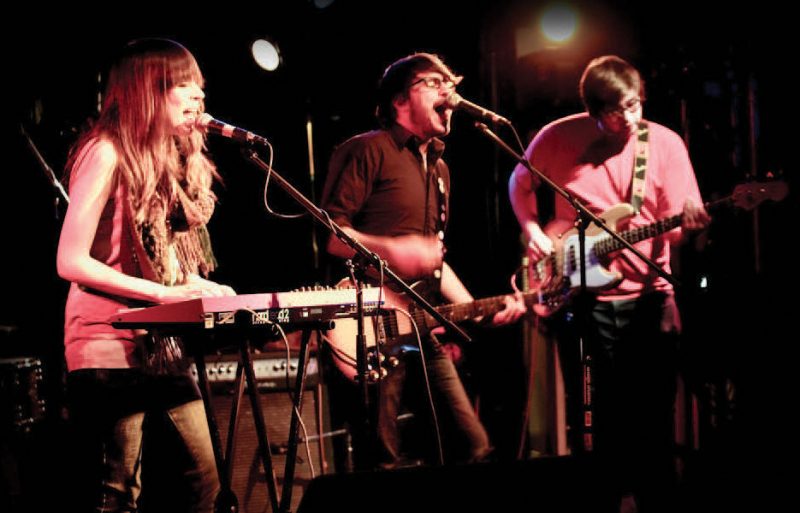While recording an album can be one of the most demanding and complicated projects a band undertakes, the financial side of recording has the potential to be very straightforward. Below is a comparison between two albums recorded by the same band: Minneapolis’s One for the Team. The first, Build a Garden, used digital technology that put most of the elements of production in the hands of the artists—cutting out the need for professionals, but ceding responsibility for quality to the band. The second record, Ghosts, released in March, was recorded at John Vanderslice’s Tiny Telephone studios in San Francisco in October of 2009. Ghosts was a traditional studio recording on two-inch tape, using equipment that has been around for decades.
The budgets are divided into three sections: recording, equipment, and post-production. Recording costs are the costs the band incurs getting to the studio and storing their music electronically. Equipment costs include equipment that is unique to each recording. The studio spreads the cost of this equipment over multiple recordings. Post-production is the cost of polishing the recorded tracks and printing CDs.
This is an installment of Creative Accounting, an ongoing series that shows where the money goes for the major creative industries. Future issues will cover dance, fine art, television, and more. Eventually, the series will be collected into a single, indispensable volume, published by Believer Books.
—Christopher Benz
DIGITAL AND ANALOG ALBUMS
$1,730 & $204,790

I. Build a Garden EP (2009)
RECORDING $0
Because they recorded digitally in a bedroom, there were no costs for studio rental or engineer time.
EQUIPMENT $1,230
Recording equipment $1,080
Soundelux U1-95 microphone $1,080
- The only microphone in the recording session, this is an “omni-microphone”—it records in all directions. They set it up in the middle of the room and then recorded live.
Software $150
Pro Tools LE 8 $150
- Unlike the process of recording layer by layer, and then adjusting sound levels, music software makes it possible to edit at a minute level. Nonetheless, the band chose to leave mistakes in, to keep a natural feel.
POST-PRODUCTION $500
Mastering $500
Dave Gardner $500
- Part manufacturing process and part art form, mastering prepares an album for reproduction. The idea is to create a stellar original for a factory to copy. Mastering engineers perform a hybrid of quality-control and fine-tuning.
TOTAL
- Recording $0
- Equipment $1,230
- Post-production $500
- Cost to band of master copy $500
Equipment counts as a sunk cost.
Grand Total $1,730
II. Ghosts LP (2010)
RECORDING $16,750
Transportation $1,000
The band toured from Minneapolis to San Francisco and back, playing gigs along the way.
Lodging $2,000
The band sublet an apartment in San Francisco’s Mission District for seventeen days.
Session 1 $9,350
Studio time at Tiny Telephone $5,950
- Seventeen days at $350 a day.
Rhythm $1,400
Guitar and keys $875
Vocals $175
- On the seventh day, the two singers spent all night recording vocal tracks. Meanwhile, the rhythm section of the band used the touring van to start a moving service, and spent the remainder of their stay carting furniture around San Francisco.
Mixing $3,500
The next ten days were devoted to mixing—the process of adjusting the details of each track for a cohesive sound. For example, they eliminated a “weird low hum” through compression—shrinking the sounds that would show up as very high bars or very low bars on an equalizer.
Sound engineer $3,400
Ian Pellicci engineered the album over the course of seventeen days; he charges $200 a day. An engineer creates a style and sense of completeness for a track and an album—much as a film director creates the feel of a movie.
Engineering Rhythm $800
Engineering guitar, keys $500
Engineering vocals $100
Mixing $2,000
Remix of track 7 $550
Studio time at Tiny Telephone $350
Engineer time $200
- One day at $200 a day. “On the drive home, we were listening to the album, and one song stuck out like a sore thumb.” Pellicci lifted the volume on the drums, among other changes, emailed an MP3, and Anderson suggested more corrections.
Remix of album $3,850
- Friends, radio DJs, and others asked for louder vocals on the entire album, so they sent it back.
Studio time at Tiny Telephone $2,450
- Seven days at $350 a day. This remix created a “more mainstream feel.”
Engineer time $1,400
EQUIPMENT $186,840
Recording $166,840
Two-inch tape (5 reels) $400
- Each reel lasts fifteen minutes. Pellicci bought this tape used for $80 a reel. The studio reuses the tape, and the band gets it for free. Reels cost $300 new.
Studer A827 tape recorder $30,000
- This allows the engineer to combine multiple tracks.
Neve console $70,000
- Allows the engineer to adjust individual tracks while they play. The console is the “heart of the studio.” This mid-1970s model was bought used from the BBC in 2001.
Microphones (15) $64,260
Drums (x9) $41,310
This includes one mic for each drum and a pair of overhead mics.
Bass (x2) $9,180
Guitars (x2) $9,180
Vocals (x2) $9,180
Z. Vex pedals $330
The smooth, classic blues sound of a Rhodes piano ran through these guitar-distortion pedals.
Nord Lead 2 synthesizer $1,500
Compressor $350
This makes the loudest sounds on the track quieter and the quietest sounds louder. After compression, the final track has fewer limits on its overall volume.
Software $20,000
Pro Tools HD $20,000
The HD version of Pro Tools comes with hardware, mainly sound cards and analog-to-digital converters. It serves a similar function to the Studer tape recorder.
POST-PRODUCTION $1,200
Original mastering $600
Dave Gardner $600
$100 an hour at Magneto Mastering. “Sound engineers are thinking about the relationship between instruments. I’m thinking about the relationship between frequencies on different tracks,” Gardner says.
Secondary mastering $600
This master was for the remix.
TOTAL
-
Recording $16,750
-
Equipment $186,840
-
Post-production $1,200
-
Cost to band of master copy $17,950
This is the expense if the band already owns equipment.




